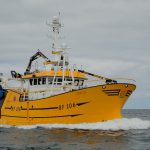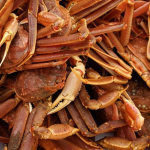The Menhaden Fisheries Coalition sees a newly funded Science Center for Marine Fisheries (SCEMFIS) project to produce a research roadmap for Atlantic menhaden in the Chesapeake Bay as a long-overdue opportunity to replace political compromise with sound science.
For nearly twenty years, the Chesapeake Bay menhaden harvest cap, a harvest limit that applies only to the reduction fishery, has been managed without biological justification. Regulators and scientists have repeatedly acknowledged this fact. The new project from SCEMFIS will identify the research needed to finally develop what the scientists leading the project call a ‘scientifically defensible and ecologically meaningful Chesapeake Bay cap.’
When the cap was first imposed in 2006, it was a political compromise between Virginia, Maryland, and environmental groups, not a conservation measure grounded with a scientific justification.
As the Atlantic States Marine Fisheries Commission’s (ASMFC) own executive director at the time, Vince O’Shea, testified before Congress in 2008, the Bay Cap was established ‘in response to a political problem’ and ‘there was not a science basis for the Cap.’
That view was echoed by ASMFC’s scientific staff.
In 2012, the Menhaden Plan Development Team concluded that ‘the annual Chesapeake Bay harvest cap is not based on a scientifically quantified harvest threshold, fishery health index, or fishery population level study.’
Despite repeated coastwide stock increases and consistent findings that the Atlantic menhaden population is not overfished and overfishing is not occurring, the Chesapeake Bay menhaden harvest cap has remained fixed at 51,000 tonnes, less than half the level originally set in 2006. Meanwhile, the ASMFC has allowed other Bay fisheries, including Maryland and Potomac River bait harvesters, to increase their quotas.
According to the Menhaden Fisheries Coalition, the Chesapeake Bay menhaden harvest cap has become a symbol of how fisheries policy can drift away from science with outside influence from special interest groups dictating management strategies.
The SCEMFIS-funded effort, led by scientists from the Chesapeake Biological Laboratory, the Virginia Institute of Marine Science, and NOAA, will begin by conducting an extensive review of the existing data on relevant issues such as Atlantic menhaden biomass, the movement of schooling pelagic fish, and the consumption of Atlantic menhaden by Chesapeake Bay predators. They will also work with the industry to review data sources such as landings data and spotter pilot reports to complement existing peer-reviewed studies and other sources of data.
After the review, the researchers will identify knowledge gaps, and will propose new study designs and methodologies to fill these knowledge gaps to inform a Chesapeake Bay menhaden harvest cap that is based on data and is scientifically defensible.
SCEMFIS is a collaborative project between the fishing industry and leading finfish and shellfish researchers aimed at improving our understanding of important commercial species and supporting sustainable management of the fisheries that depend on them. It is part of the National Science Foundation’s Industry/University Cooperative Research Centers program.
























